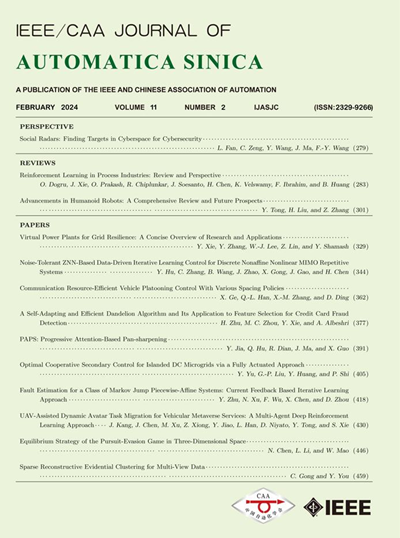Length-Variable Bionic Continuum Robot with Millimeter-Scale Diameter and Compliant Driving Force
IF 19.2
1区 计算机科学
Q1 AUTOMATION & CONTROL SYSTEMS
引用次数: 0
Abstract
Compared with conventional rigid-link robots, bionic continuum robots (CRs) show great potential in unstructured environments because of their adaptivity and continuous deformation ability. However, designing a CR to achieve miniaturization, variable length and compliant driving force remains a challenge. Here, inspired by the earthworm in nature, we report a length-variable bionic CR with millimeter-scale diameter and compliant driving force. The CR consists of two main components: the robot body and soft drives. The robot body is only 6 mm in diameter, and is composed of a backbone and transmission devices. The backbone is divided into three segments, and each segment is capable of adjusting its length and bending like the earthworm. The maximum length variation of the backbone can reach an astonishing 70 mm with a backbone's initial length of 150 mm, and the maximum bending angle of each segment can reach 120 degrees. In addition, we develop soft drives using pneumatic soft actuators (PSAs) as a replacement for the rigid motors typically used in conventional CRs. These soft drives control the motions of the transmission devices, enabling length variation and bending of the backbone. By utilizing these soft drives, we ensure that the robot body has a compliant driving force, which addresses users' concerns about human safety during interactions. In practical applications, we prove that this CR can perform delicate manipulations by successfully completing writing tasks. Additionally, we show its application value for detections and medical treatments by entering the narrow tube and the oral.具有毫米级直径和柔性驱动力的可变长度仿生连续体机器人
与传统的刚性连杆机器人相比,仿生连续体机器人由于具有自适应能力和连续变形能力,在非结构化环境中显示出巨大的应用潜力。然而,如何设计出能够实现小型化、可变长度和柔性驱动力的CR仍然是一个挑战。在这里,受自然界蚯蚓的启发,我们报道了一个毫米级直径和柔性驱动力的长度可变仿生CR。CR主要由两部分组成:机器人本体和软驱动器。机器人本体直径仅6毫米,由骨干和传动装置组成。脊骨分为三段,每段都能像蚯蚓一样调节长度和弯曲。梁的初始长度为150 mm,梁的最大长度变化可达到惊人的70 mm,各段的最大弯曲角可达120度。此外,我们还开发了使用气动软执行器(psa)的软驱动器,以替代传统cr中通常使用的刚性电机。这些软驱动器控制传输装置的运动,使长度变化和骨干弯曲。通过使用这些软驱动器,我们确保机器人身体具有顺应的驱动力,这解决了用户在交互过程中对人体安全的担忧。在实际应用中,我们证明了该CR可以通过成功地完成写作任务来执行微妙的操作。此外,我们还展示了它在检测和医学治疗中的应用价值,通过进入狭窄的管道和口腔。
本文章由计算机程序翻译,如有差异,请以英文原文为准。
求助全文
约1分钟内获得全文
求助全文
来源期刊

Ieee-Caa Journal of Automatica Sinica
Engineering-Control and Systems Engineering
CiteScore
23.50
自引率
11.00%
发文量
880
期刊介绍:
The IEEE/CAA Journal of Automatica Sinica is a reputable journal that publishes high-quality papers in English on original theoretical/experimental research and development in the field of automation. The journal covers a wide range of topics including automatic control, artificial intelligence and intelligent control, systems theory and engineering, pattern recognition and intelligent systems, automation engineering and applications, information processing and information systems, network-based automation, robotics, sensing and measurement, and navigation, guidance, and control.
Additionally, the journal is abstracted/indexed in several prominent databases including SCIE (Science Citation Index Expanded), EI (Engineering Index), Inspec, Scopus, SCImago, DBLP, CNKI (China National Knowledge Infrastructure), CSCD (Chinese Science Citation Database), and IEEE Xplore.
 求助内容:
求助内容: 应助结果提醒方式:
应助结果提醒方式:


